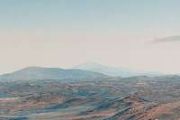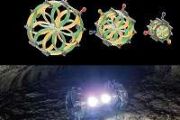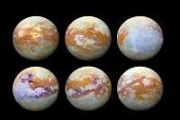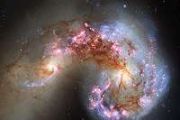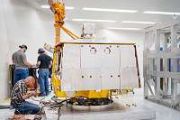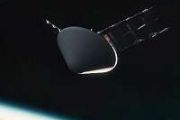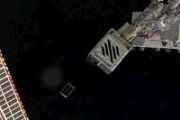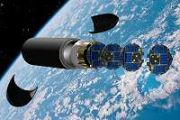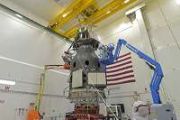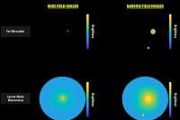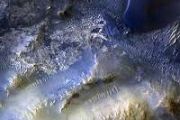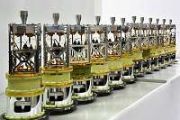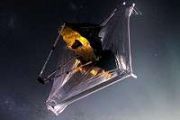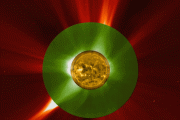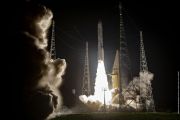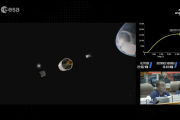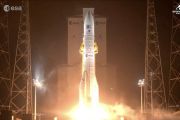
Copernical Team
Fuel leaks threaten to delay launch of new NASA moon rocket (Update)

NASA began fueling its new moon rocket early Monday for liftoff on a test flight to put a crew capsule into lunar orbit for the first time in 50 years.
Thunderstorms delayed the fueling operation by an hour. The threat of lightning diminished enough to allow the launch team to proceed with loading the rocket's tanks.
Engine problem leads NASA to scrub launch of new moon rocket

A fuel leak and then an engine problem during final liftoff preparations led NASA to call off the launch of its mighty new moon rocket Monday on its debut flight with three test dummies aboard.
The next launch attempt will not take place until Friday at the earliest and could be off until next month.
AI illuminates permanently shadowed regions on the moon

With the help of artificial intelligence, an international research team led by ETH Zurich has explored the moon's permanently shadowed regions. The information they have obtained about the area's surface properties will help to identify suitable locations for future lunar missions.
It was 1972 when the last humans landed on the moon. The Apollo program was discontinued thereafter. But interest in the moon has been rekindled. With China having landed a robot—and raised its flag—on the far side of the moon in 2020, NASA is planning for its Artemis program to land in the lunar south pole region, probably between 2025 and 2028.
Artemis I launch attempt scrubbed
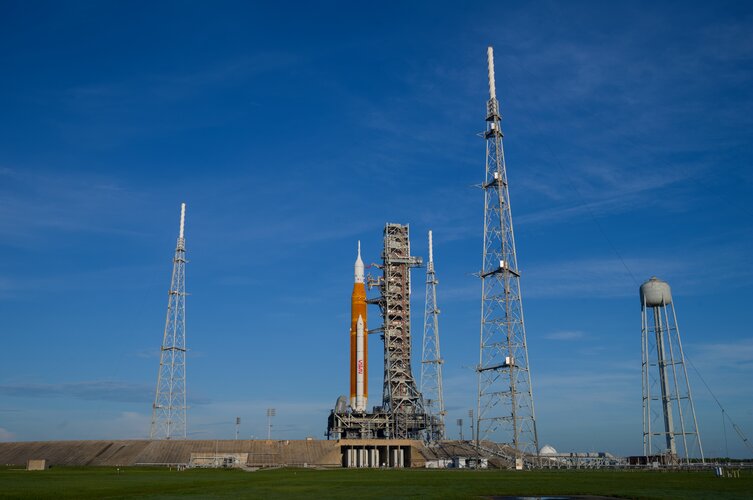
The countdown has started for the first human-rated launch to the Moon in over half a century. ESA’s European Service Module will be powering the Orion spacecraft to our natural satellite and back.
Energy particle detector helps Shenzhou-14 crew conduct EVAs
 The energy particle detector deployed on Wentian, the first lab module of China's space station, will help the Shenzhou-14 crew members carry out extravehicular activities (EVAs), according to the China Manned Space Agency (CMSA).
The Wentian module has been operating stably in orbit for nearly a month, and the Shenzhou-14 crew have been training and preparing for their first EVAs during t
The energy particle detector deployed on Wentian, the first lab module of China's space station, will help the Shenzhou-14 crew members carry out extravehicular activities (EVAs), according to the China Manned Space Agency (CMSA).
The Wentian module has been operating stably in orbit for nearly a month, and the Shenzhou-14 crew have been training and preparing for their first EVAs during t NASA Scientists Help Probe Dark Energy by Testing Gravity
 Could one of the biggest puzzles in astrophysics be solved by reworking Albert Einstein's theory of gravity? A new study co-authored by NASA scientists says not yet.
The universe is expanding at an accelerating rate, and scientists don't know why. This phenomenon seems to contradict everything researchers understand about gravity's effect on the cosmos: It's as if you threw an apple in the
Could one of the biggest puzzles in astrophysics be solved by reworking Albert Einstein's theory of gravity? A new study co-authored by NASA scientists says not yet.
The universe is expanding at an accelerating rate, and scientists don't know why. This phenomenon seems to contradict everything researchers understand about gravity's effect on the cosmos: It's as if you threw an apple in the NRL fungal experiment launches as Artemis I payload
 An experiment prepared by the U.S. Naval Research Laboratory (NRL) will launch as part of NASA's scheduled Artemis I mission to orbit the moon Aug. 29. The NRL experiment will use samples of fungi to investigate effects of the deep space radiation environment outside of Earth's protective magnetosphere.
"We're interested in factors that affect eukaryotic survival in space," said Jennifer Y
An experiment prepared by the U.S. Naval Research Laboratory (NRL) will launch as part of NASA's scheduled Artemis I mission to orbit the moon Aug. 29. The NRL experiment will use samples of fungi to investigate effects of the deep space radiation environment outside of Earth's protective magnetosphere.
"We're interested in factors that affect eukaryotic survival in space," said Jennifer Y Allen Dufort: Coding a cutting-edge space telescope
 In July, as the world marveled at the first images of the Cosmic Cliffs and previously invisible areas of star birth revealed by the James Webb Space Telescope, Allen Dufort felt excited that he'd soon make his own contributions to space exploration.
As a software engineer intern for Brown University Professor of Physics Gregory Tucker, Dufort has spent Summer 2022 writing computer code fo
In July, as the world marveled at the first images of the Cosmic Cliffs and previously invisible areas of star birth revealed by the James Webb Space Telescope, Allen Dufort felt excited that he'd soon make his own contributions to space exploration.
As a software engineer intern for Brown University Professor of Physics Gregory Tucker, Dufort has spent Summer 2022 writing computer code fo NASA schedules SwRI-led PUNCH mission to launch in 2025
 More than 60 engineers and scientists are gathering at Southwest Research Institute Aug. 23-24 to kick off the launch vehicle collaboration for NASA's Polarimeter to Unify the Corona and Heliosphere (PUNCH) mission.
PUNCH, which will study the inception of the solar wind, has secured its ride into Earth orbit aboard a SpaceX Falcon 9, sharing a ride into space with NASA's Spectro-Photomete
More than 60 engineers and scientists are gathering at Southwest Research Institute Aug. 23-24 to kick off the launch vehicle collaboration for NASA's Polarimeter to Unify the Corona and Heliosphere (PUNCH) mission.
PUNCH, which will study the inception of the solar wind, has secured its ride into Earth orbit aboard a SpaceX Falcon 9, sharing a ride into space with NASA's Spectro-Photomete Sols 3568-3570: That Was Close
 Coming in to work on the three-sol plan for the weekend, we were met with another set of stunning Images of the landscape around us. But for the Rover Planners the thing that really stood out is just how close we are to the very large rock (which you can see in the above image). Fortunately, Curiosity is safe and sound and ready for another set of exciting activities on Mars.
The first sol
Coming in to work on the three-sol plan for the weekend, we were met with another set of stunning Images of the landscape around us. But for the Rover Planners the thing that really stood out is just how close we are to the very large rock (which you can see in the above image). Fortunately, Curiosity is safe and sound and ready for another set of exciting activities on Mars.
The first sol 
